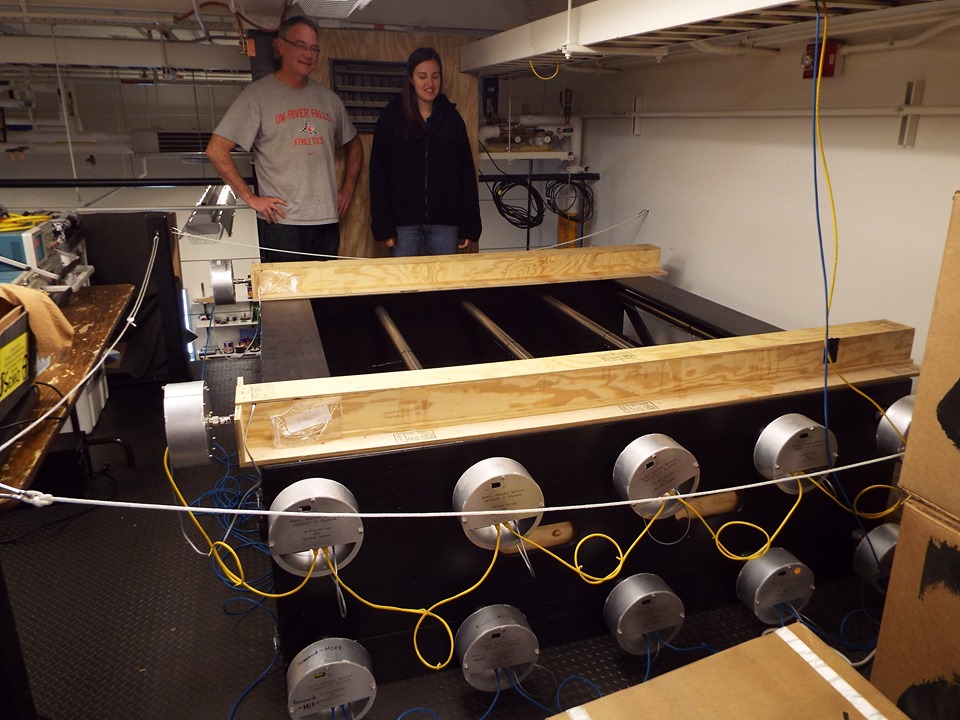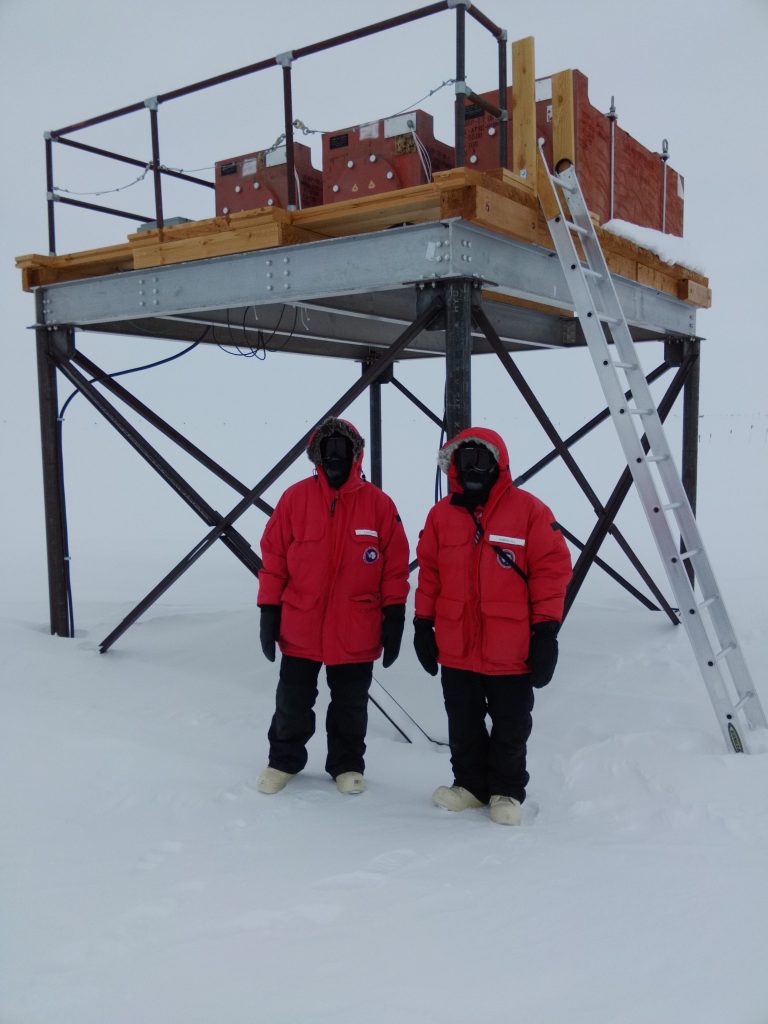Charged particles can be accelerated by magnetic forces on the sun to energies much greater than those from individual fusion reactions. Some of these particles interact with the Earth’s atmosphere creating a cascade of secondary particles, including neutrons, that make their way to the Earth’s surface. Neutron monitors are passive counters. Neutrons interact with gas, either helium-3 (3He) or boron-trifluoride (10BF3), inside a pressurized tube. The subsequent radioactive decay produces an alpha particle and the partner ionized nucleus. The cartoon shows the enriched boron reaction which produces a lithium-ion. The ion and alpha particles are accelerated high potential difference maintained between an isolated central wire and the outer conducting surface of the tube. The resulting cascade produces a measurable pulse that is counted. These counts allow us to determine the flux of cosmic rays interacting with the earth’s atmosphere.
The picture illustrates the three-tube neutron monitors placing on the platform at the South Pole. Our collaborators (in red cloth) from the University of Wisconsin-River Falls stood nearby the platform. Besides the neutron monitor, there are 12 tubes of bare neutron monitors. The configurations are simply a neutron monitor tube without the lead producer or outer reflector in the standard NM64 configuration.



